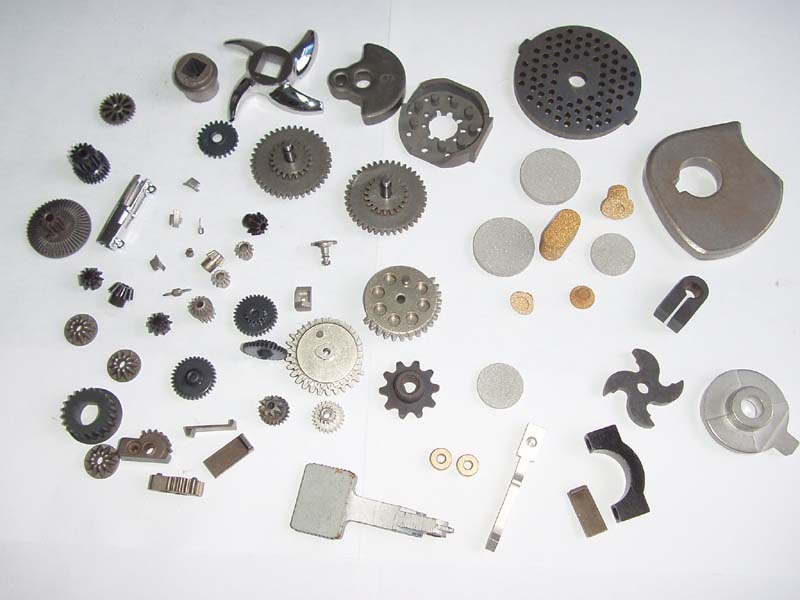Raw Materials
Metal Powders
The chief raw materials used in the production of powder metallurgy components are the metal powders. These consist of fine, high purity metal powders produced by processes such as atomisation, pulverisation, chemical reduction, electrolytic techniques or mechanical alloying. Of these processes, atomisation is the most popular technique.
Lubricants
Lubricants are added to the metal powders to reduce friction between powders and pressing dies, which in turn reduces pressure gradients.
Forming Processes
The raw materials are formed into shapes using pressure based techniques such as:
¡¤ Cold uniaxial pressing
¡¤ Metal injection moulding
¡¤ Cold isostatic pressing
¡¤ Hot isostatic pressing
¡¤ Hot forging
The latter 2 processes also combine the forming and sintering processes together.
Compaction of the raw materials at high pressures forms a ¡°green shape¡±, where the particles bond together by mechanical interlocking and cold welding. Pressing at sufficiently high pressures gives the green shape enough strength to be handled and machined.
The amount of compression experienced by the powder during the forming process will dictate its green density. This in turn will control the amount of shrinkage/growth the powder compact will undergo during the sintering process. It will also influence the physical properties of the final component.
Sintering
Sintering is a high temperature process used to develop the final properties of the component. It involves heating to temperatures below the melting point of the major constituent in an inert atmosphere to protect against oxidation. Typically temperatures of approximately 80% of the melting point are used.
During the sintering process, adjacent particles bond together by solid state diffusion processes.
As mentioned eralier, processes such as hot isostaic pressing and hot forging combine the sintering and forming process into a single stage.
Secondary Operations
Sometimes secondary operations are used to improve surface finish or make sure components fall within required tolerances. Such operations may include, drilling, grinding, repressing.
Density and strength can also be increased by a secondary sintering and depressing operation.
Sometimes porous metal components are deliberately produced so that they can be infiltrated with secondary materials. Further they are produced such that have interconnected pores, or capillary pores. These can be infiltrated with oil or other lower melting point metals. For this to work properly, oxide free pores are required, again requiring processing in an inert atmosphere.
An example of a metal infiltrated metal matrix are iron alloys infiltrated with alloys such as bronze brass or copper.
Heat Treatments
Due to the capillary porosity and the potential for future bleed out, powder metallurgy parts should not be liquid cyanide hardened or heat treated in liquid salt baths.
Processes such as gas carburising, carbonitriding and black oxide steam treatments are suitable methods for heat treating components manufactured by powder metallurgy. The latter process can also be used as an effective method of closing pores in iron based parts. | 



